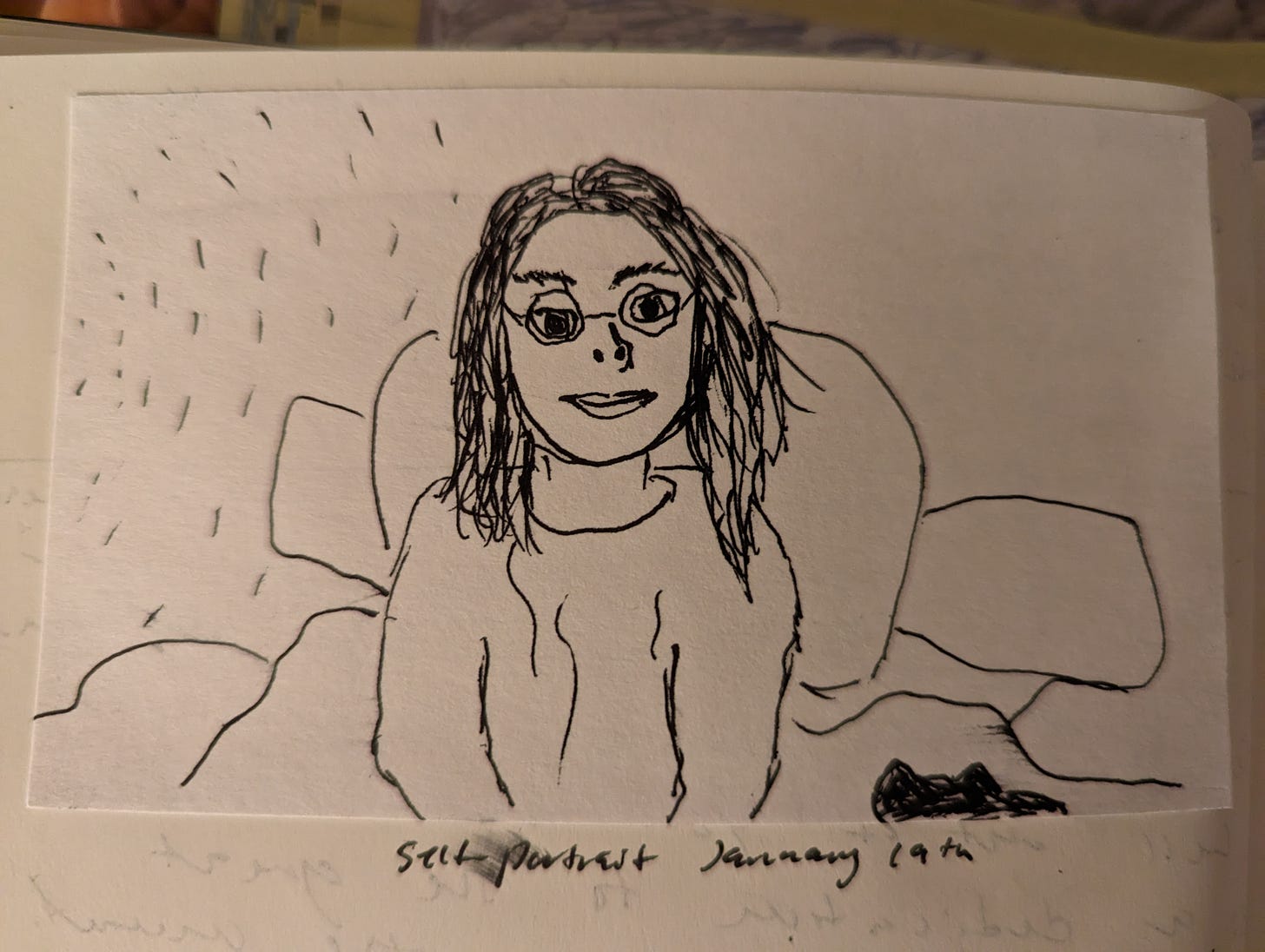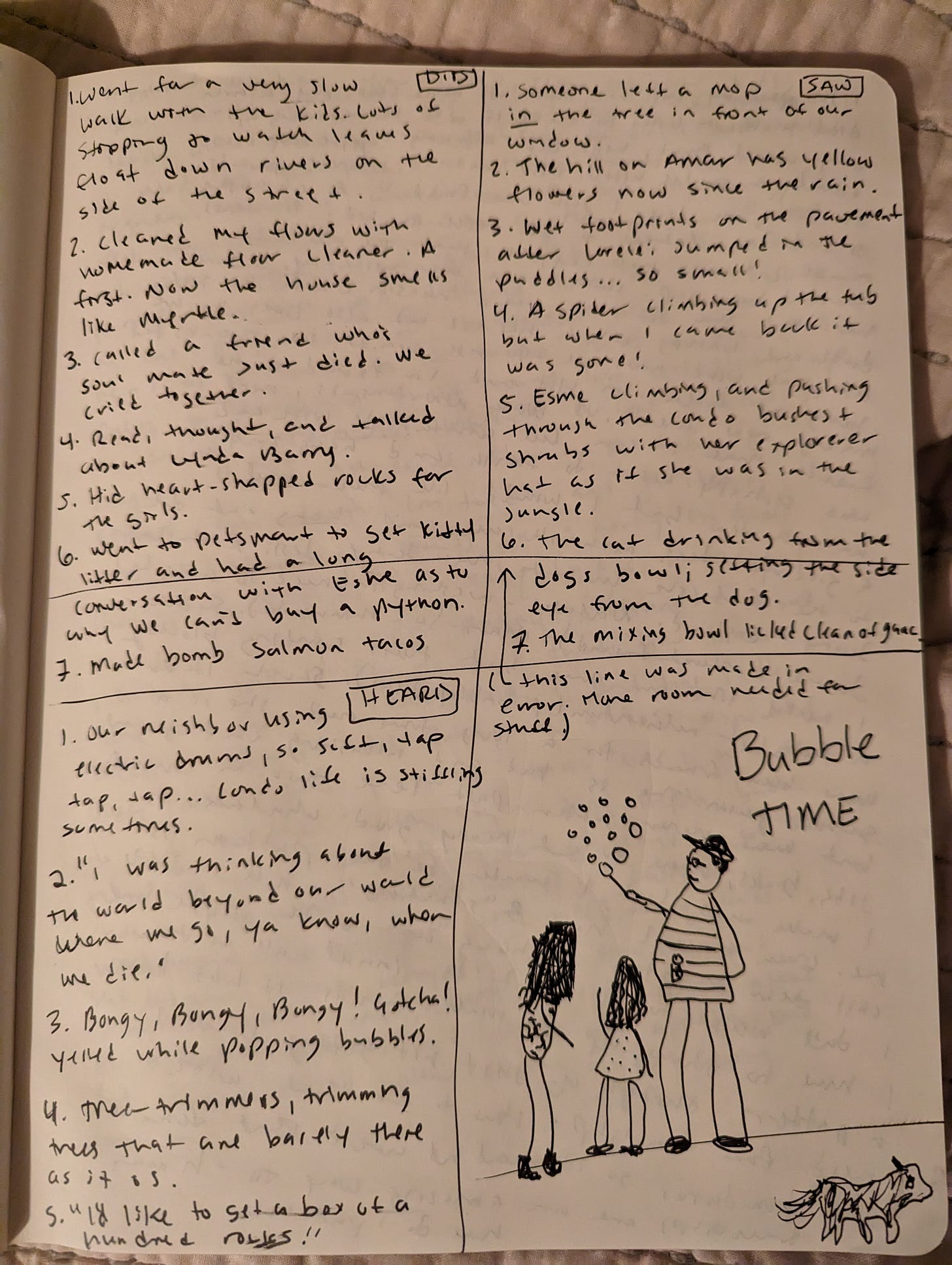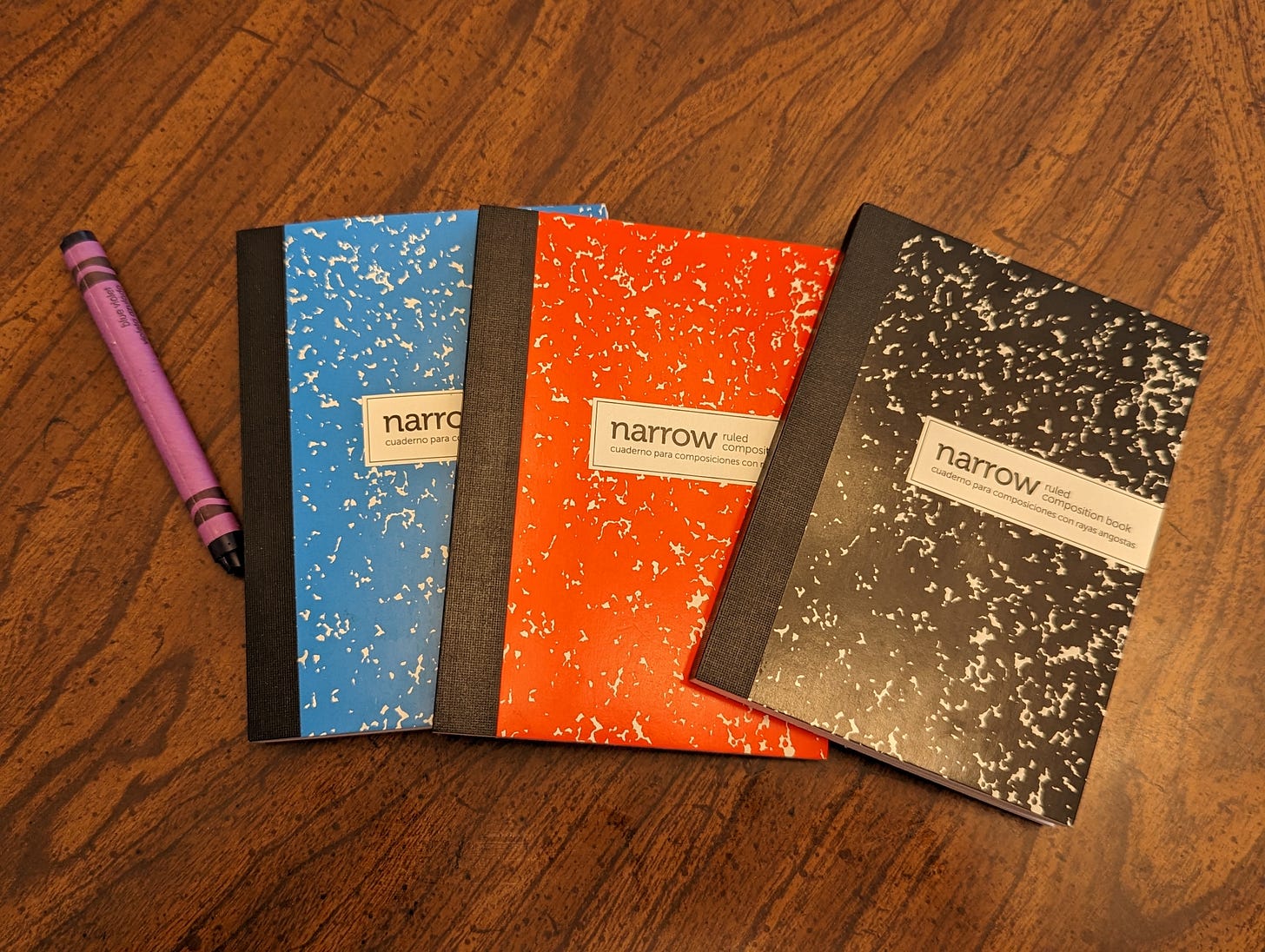I am not what you would call good at drawing (see above referenced self-portrait) but I do know that when I draw things (anything will do) I feel better as a person. At first, I might feel frustrated or embarrassed but when I move past that initial gate keeper emotion I feel at ease. Even if it’s just a spiral doodle I feel better. More peaceful. Less concerned about rightness and more in the moment of what is ness. My brain untangles itself and I can laugh at my badness and furrow my brow at how tricky it is to make a cat look like a cat and not a demon or a strange squirrel. I’m sure the feel goodness has something to do with getting the thinking part of my brain to focus on one line on a page; in the doing of the thing instead of wondering how. And that this certain way of feeling good is simple and achievable instantly. It takes time but it’s waiting there for us at home in our desk, at the bank, or in a glove box. I am a very impatient person when it comes to feeling good or anything really and it’s comforting to me that drawing or writing is always accessible; a napkin and a pen and suddenly you’ve got a way to put your hand in motion and find yourself in a place that isn’t here nor there but exactly where you are. And when you find yourself where you are (no matter how imperfect), and you tolerate sitting there for a bit, you can find what the old folks call grace.
A daily practice with images both written and drawn is rare once we have lost our baby teeth and begin to think of ourselves as good at something and bad at other things. It’s not that this isn’t true but the side effects are profound once we abandon a certain activity like drawing because we are bad at it. A certain state of mind (what McGilchrist might call “attention”) is also lost. A certain capacity of the mind is shuttered and for most people, it stays that way for life.
Lynda Barry
This idea to do a report on imperfect things came from a wish to be able to move through my day with less concern about whether the things I was attempting were as they say worth it. Worth it, to my culturally trained brain, meant that the day had turned out in a certain way (good) and not crashed and burned (bad). I would often find myself getting tight in the shoulders or clenching my jaw when dinner flopped, when my kiddos were having a feral time on a hike, or when I would sit down to try to play piano and end up blurry eyed, shaking my head at the wonder that is trying to get two hands to do two different things (it really is incredible). And so my thought is, that by regularly sharing the practice of trying new things, and not being great at them, I can get used to the temperature of the state of imperfection. It’s kinda like taking a cold plunge; you start hyperventilating before you get in and you feel like you might die but once you go for it suddenly you’re grinning and jumping up and down and feeling alive and stuff.
You think it’s great and I think it’s terrible. What happens to a picture because of what we think? Nothing.
Lynda Barry
In last week’s Love List I shared I was reading Lynda Barry’s book Syllabus. The reason I love it so much is that she shares all the tools she has experimented with over the years to help her students get past their hangups (aka egos). And they are simple simple simple; journaling, coloring, drawing, listening, looking. And she puts a timer on things so that folks don’t over think as they are going along. One of her assignments is to have students do a self-portrait on an index card everyday. Just sit down and draw yourself. The self-portrait at the beginning of this post was done following this exercise and it felt very uncomfortable. I didn’t know where to start. I wanted to take a selfie with my phone, see what I look like and then try and copy it. I didn’t though as that was not the point of the exercise. And so I had to go slowly and think to myself what do I look like? What kind of eyebrows do I have? Something I’ll say I don’t consider often. And that’s where the secret magic to this exercise is…it’s in the considering of things and moving forward when you don’t know how…everyday…again and again.
Before this year it had been a long long time since I’d written anything personal. Just hearing someone mention the word journal prompt made me nauseous, grouchy and itchy. It think it just required a certain capacity to enjoy hearing your own voice or to at least love yourself enough to listen to the voice when it was annoying as hell and I just didn’t have it. Then I joined a Artist’s Way cohort with the coach Jaime Summer Handley and started doing morning pages. I hated calling them this. It reminded me of a morning constitution or something but I did it everyday. Once when my kids woke up and I couldn’t get to my book I wrote the pages in the air using my finger. So to say I’ve been religious about them would be accurate. This type of journal writing is very subjective; it’s what they call a brain dump or stream of consciousness. You just go and let it flow. The picture I attached above is from Lynda Barry’s 6 minute journal prompt (the time changes as she goes along in Syllabus…it becomes a 4 minute prompt). This way of journaling is objective and glorious in it’s simplicity. What did you do?, see?, hear?, and then draw something you saw. It asks you to release yourself to the experience of walking through your day, to the not knowing what will come, and to pay attention and just listen, look, and capture what comes…I found myself wishing I’d seen something fantastic or sitting and wondering what did anyone say today?? And then then it would come back to me… ahhh yes, Lorelei saying ketchup is my favorite ranch and I’d start to scribble it all down.
I did end up buying these min-comp books to help me remember what people say, I have an awful memory, and it was my favorite part of the exercise. I wanted something that would fit in my pocket and wouldn’t involve me looking like I’m staring at my phone. The funny things people say…especially my kids…are worth noticing if merely to have something to chuckle about before you go to bed. Go get yourself some! They’re super fun.
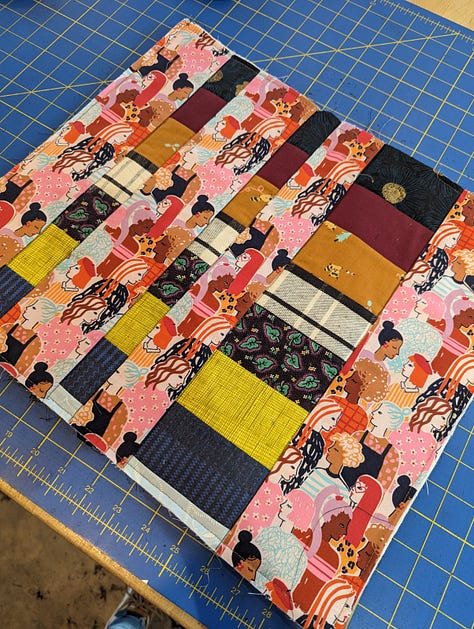
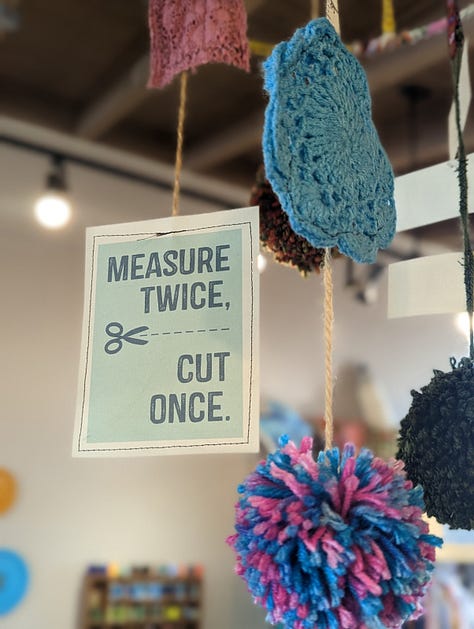
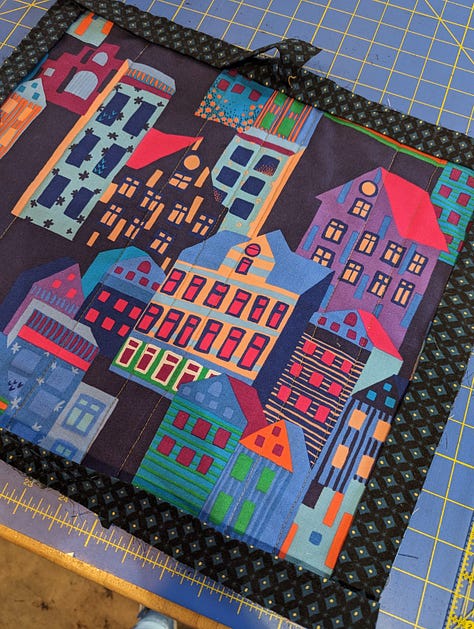
Last week I had my first quilting class and my hands were actually sweating when I sat down at the machine. I forgot to put the paddle foot down, SEVERAL TIMES, and got nests of thread under my work which had to be untangled. I miss measured and had to toss out fabric and then re-measure and re-cut. I chose a fabric, got them all arranged, and then didn’t like it. I went askew when making my stitch and you could see it, clearly, on the front of my piece. But in all these things I worked slowly and laughed and heard myself saying just keep going. I asked the teacher questions over and over and asked for help and it felt good to be a grown up asking for help. Such a simple thing right?! Saying I don’t know how and then watching and learning and at the end of the day knowing a little more about something than I did when I rolled out of bed. My hands didn’t sweat yesterday when I sat down for my second class. I still got knots under my paddle foot and asked a ton of questions but it gets better quicker than you think…it also takes longer than you think.
Perhaps we should just end every post with a pegasus?! Ah coloring; if you have kids you probably sit and do it with them all the time. If you don’t have little humans at home it’s probably not something you have on your radar as a to-do this weekend. Either way I recommend you go out and buy a box of crayons and a coloring book just for yourself. It’s a gentle way to start doing something that might make you feel a bit silly, which is what we’re looking for when working with imperfection, and it has guardrails (the lines are already there for you). You just color and you find yourself feeling better…promise. Lynda even suggests trying it out while listening to music, poetry, or podcasts and noticing how it affects the experience and the outcome. The details of the assignment for the above drawing were to try and fill in ALL the white space and get as much of the crayon on the page as possible. I didn’t get it all filled in on this one or go nearly as hard as I have since practicing but I was pleased with how it turned out and impressed with what happens when you fill in the whole page. First it takes patience! And also, it forces you to pay attention to the picture and the experience as a whole. I noticed while my kids colored with me they were comparing and judging their work against mine and each other. I asked them to try and fill in all the white space on their pictures and their focus became very fixed. Their heads got close to the paper and anyone else’s work fell away; they were suddenly all in. It’s the small shifts of focus that change the way we approach our work, our day, and even our relationships. Today the assignment might be coloring, but tomorrow it’s the thing we’ve been dreaming about.
Nothing is a mistake. There’s no win and no fail. There’s only make.
Corita Kent
I hope you have a week filled with imperfect, unexpected delights my friends. Let’s all try something new, or just sit down and feel a little silly, pay attention to the shapes of things and let the surprises find us while we’re standing in line at the store, picking our nose in our car, or staring into our teacup.
Go get em!




